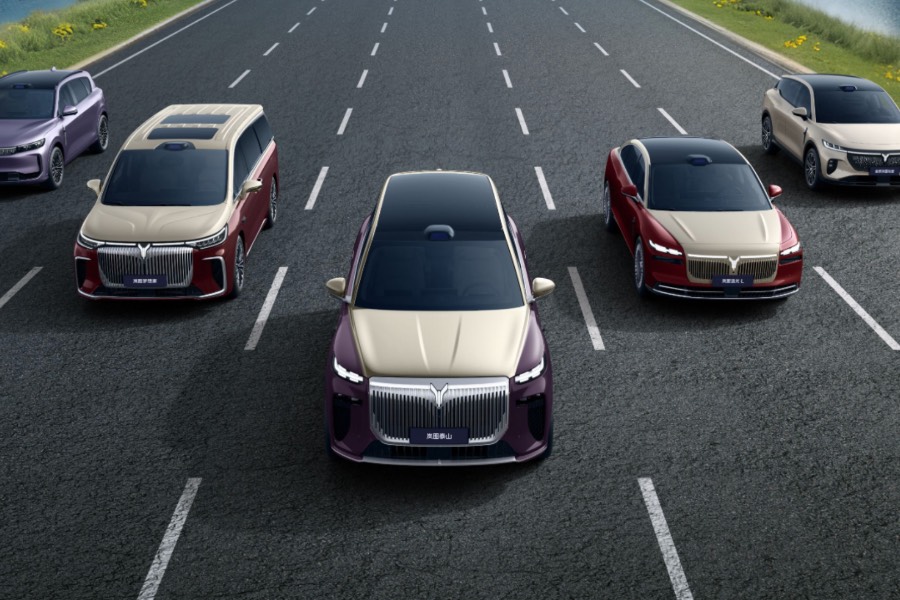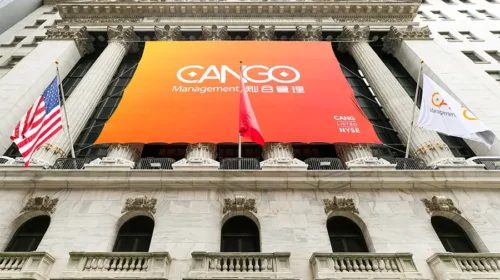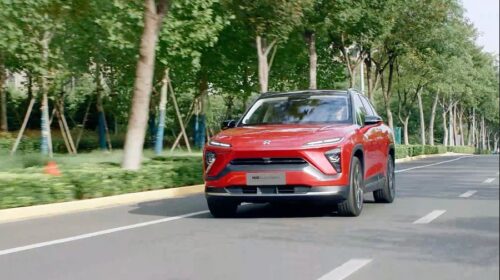Auto stalwart Dongfeng charges up NEV business with Voyah listing plan

The veteran car group will privatize its namesake brand and simultaneously spin off its Voyah brand for a new listing to stay competitive in fast-evolving NEV market
Key Takeaways:
- Dongfeng plans to list its Voyah NEV unit, which turned profitable in the first seven months of this year from a year-ago loss
- The brand sold 80,000 vehicles in the first eight months of this year, matching its total for all of last year
By Lau Chi Hang
Sun Yat-sen, the father of modern China, once passed by the surging Qiantang River and was deeply moved by its mighty flow, seeing it as a metaphor for humanity’s inexorable march forward. Inspired by the sight, he penned the famous line: “The tide of history flows forward. Those who ride its current thrive. Those who defy it perish.”
So too does business need to heed such flows. With new energy vehicles (NEVs) rapidly supplanting traditional automobiles, penetration for such cars in China rocketed from just 5.8% in 2020 to 44.4% last year, and is projected to climb further to 82% by 2029.
Recognizing that consequences loom for legacy automakers that move too slowly or refuse to adapt, industry stalwart Dongfeng Motor (0498.HK, 600006.SH) knows that resting on past laurels won’t suffice. Its survival demands transformation. And in a dual-track maneuver responding to that challenge, parent Dongfeng Motor Corp is privatizing the Hong Kong-listed Dongfeng Motor while simultaneously spinning off and listing its Voyah Automotive Technology Co. Ltd. electric vehicle (EV) unit.
Voyah has its roots in the 2018 “Dongfeng Project 56,” launched when state-owned Dongfeng Motor foresaw the industry pivot towards NEVs. Formally established in 2021, Voyah says its name, which is a homophone for ‘Blueprint’ in Chinese, symbolizes its ambitious planning and a bright future.
Capitalizing on tailwinds
Voyah has leveraged Dongfeng’s 56 years of manufacturing heritage and deep resources to rapidly advance despite its relatively late arrival to China’s NEV race. The company has launched four models within just a few years, including the mid-to-large FREE SUV; the MPV Dream; the mid-to-large Passion sedan series; and the midsize Courage SUV.
Its sales have rapidly scaled up, quadrupling from 19,409 in 2022 to 80,116 NEVs last year. The company already passed last year’s total in the first eight months of the year, logging 80,185 units sold through August. That translated to roughly a doubling of sales each year from 2022 to 2024, ranking Voyah as the third-fastest growing premium NEV brand in China.
The company’s revenues have grown at a similar but slightly slower clip, more than tripling from 6.05 billion yuan ($850 million) in 2022 to 19.36 billion yuan last year. Revenue for the first seven months of 2025 reached 15.78 billion yuan, up 90% year-over-year. The company’s gross margin has also strengthened steadily as it gains economies of scale, rising from 8.3% in 2022 to 21.3% in the first seven months of 2025.
Buoyed by sharply higher revenue and improved margins, Voyah turned profitable this year – something only a handful of NEV makers can boast – recording net income of 479 million yuan in the first seven months of 2025. The move to the black, combined a hot Hong Kong IPO market, appear to be two major factors driving the timing of Dongfeng’s new listing plan.
Well-calibrated ploy
Indeed, listing Voyah right now looks like a shrewd move. Analysts say NEVs represent the undisputed future for passenger vehicles. What’s more, leaving Voyah structurally tethered to Dongfeng, with its legacy internal combustion engine (ICE) vehicle business, could undermine Voyah’s value over the longer term. As a pure-play NEV maker, Voyah should be able to get a higher valuation similar to its fast-growing NEV peers, creating better value for both itself and investors.
At the same time, the privatization of its legacy ICE car business, while also listing Voyah, allows Dongfeng Group to focus on more aggressively developing its NEV business. As an independent entity, Voyah gains a dedicated financing platform for future fundraising to accelerate its R&D and marketing efforts. An independent listing under its Voyah name, as a pure NEV play, will also help to enhance its brand image and raise its profile, which in turn will aid its overseas expansion and internationalization.
Cutthroat competition remains
All that said, Voyah’s near-term prospects remain uncertain due to its late arrival to China’s fiercely competitive NEV market where its sales still lag far behind many of its older rivals. That includes leaders like Nio (9866.HK, NIO.HK) which delivered 166,000 units in the first eight months of this year; Li Auto (2015.HK, LI.US), which delivered 263,000; Xpeng (9868.HK, XPEV.US) at 272,000; and Leapmotor (9863.HK) at 329,000 units. Not to mention industry leader BYD (1211.HK, 002594.SZ), whose 2.86 million units for that period dwarfed everyone else, including Voyah’s modest 80,000 units.
It’s also worth noting that drawing on its ties with Dongfeng, a significant portion of Voyah’s sales come from corporate clients, many of those from the state-owned realm where connections are often just as or more important than commercial factors in sales decisions. The company’s retail customers, who tend to be more commercially motivated, still lag even further behind other NEV makers, most of which have no major state-owned ties.
Identity vacuum
While Voyah often touts its vehicle designs, the reality is mixed. The company’s critics often point out a lack of distinctiveness and the absence of any breakout models. Its flagship Dream series has been criticized for clumsy design. And its Passion sedan series has been called unremarkable in appearance, paling in comparison with more distinctive EVs from smartphone maker Xiaomi (1810.HK), another recent arrival to the NEV space.
Similarly, critics say the FREE SUV’s chassis tuning is inferior to Zeekr’s, while Voyah’s overall after-sales service lags behind Nio’s, its luxury and comfort are no match for Li Auto, and its prices aren’t as competitive as Leapmotor’s. In short, the company’s products seem to lack their own unique selling points.
And despite turning profitable in the first half of the year, Voyah’s performance may not be as sleek as it seems. Its revenue each year includes government subsidies, typically ranging between 150 million yuan last year, and as high as 257 million yuan in 2022. It raked in another 110 million yuan in such handouts in the first seven months of this year.
At the end of the day, the current hot market for new listings in Hong Kong means success for Voyah’s IPO is almost certain. Whether its business can stand out among the crowd of automakers remains the big question mark over the longer term.
To subscribe to Bamboo Works weekly free newsletter, click here





